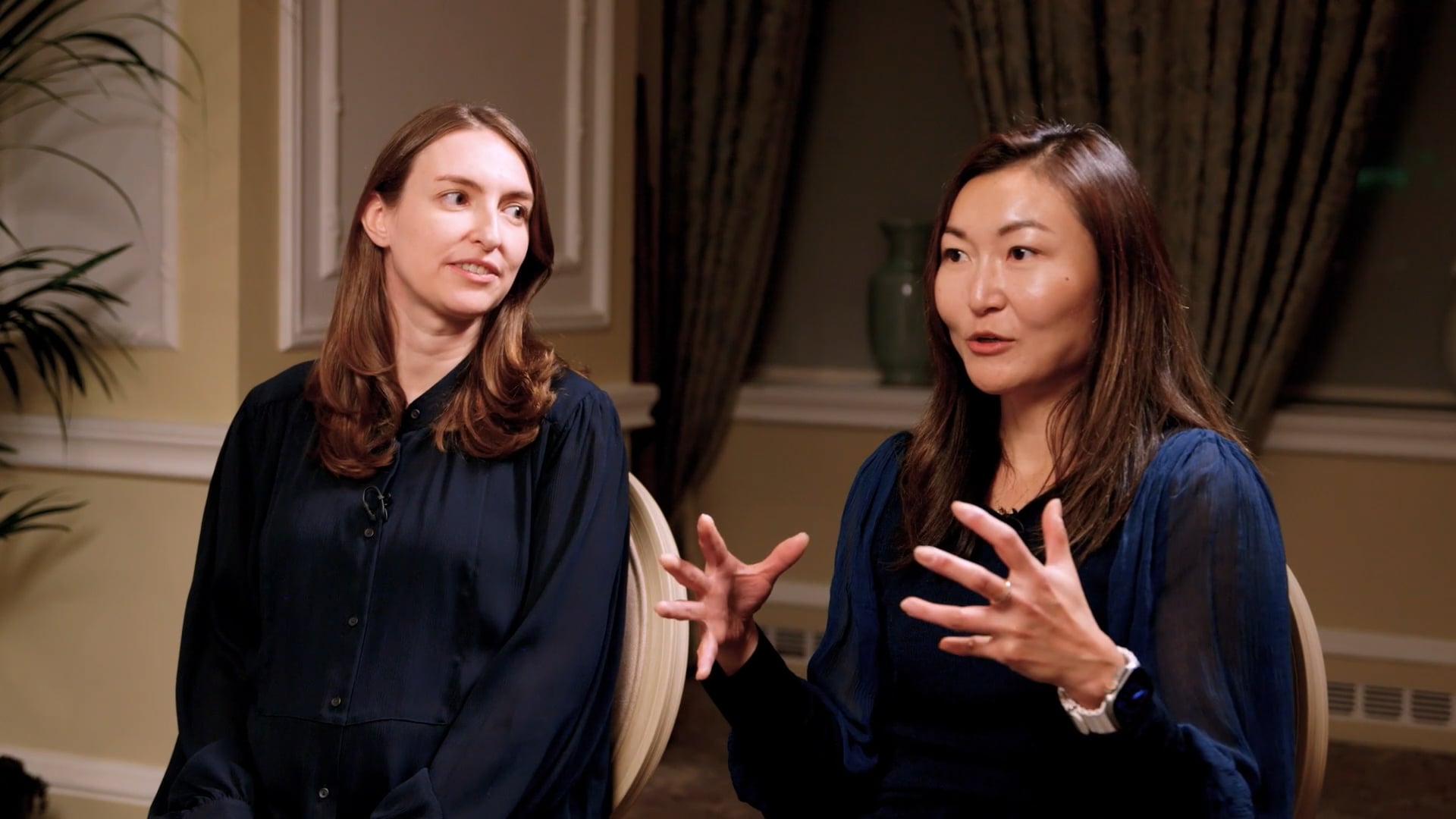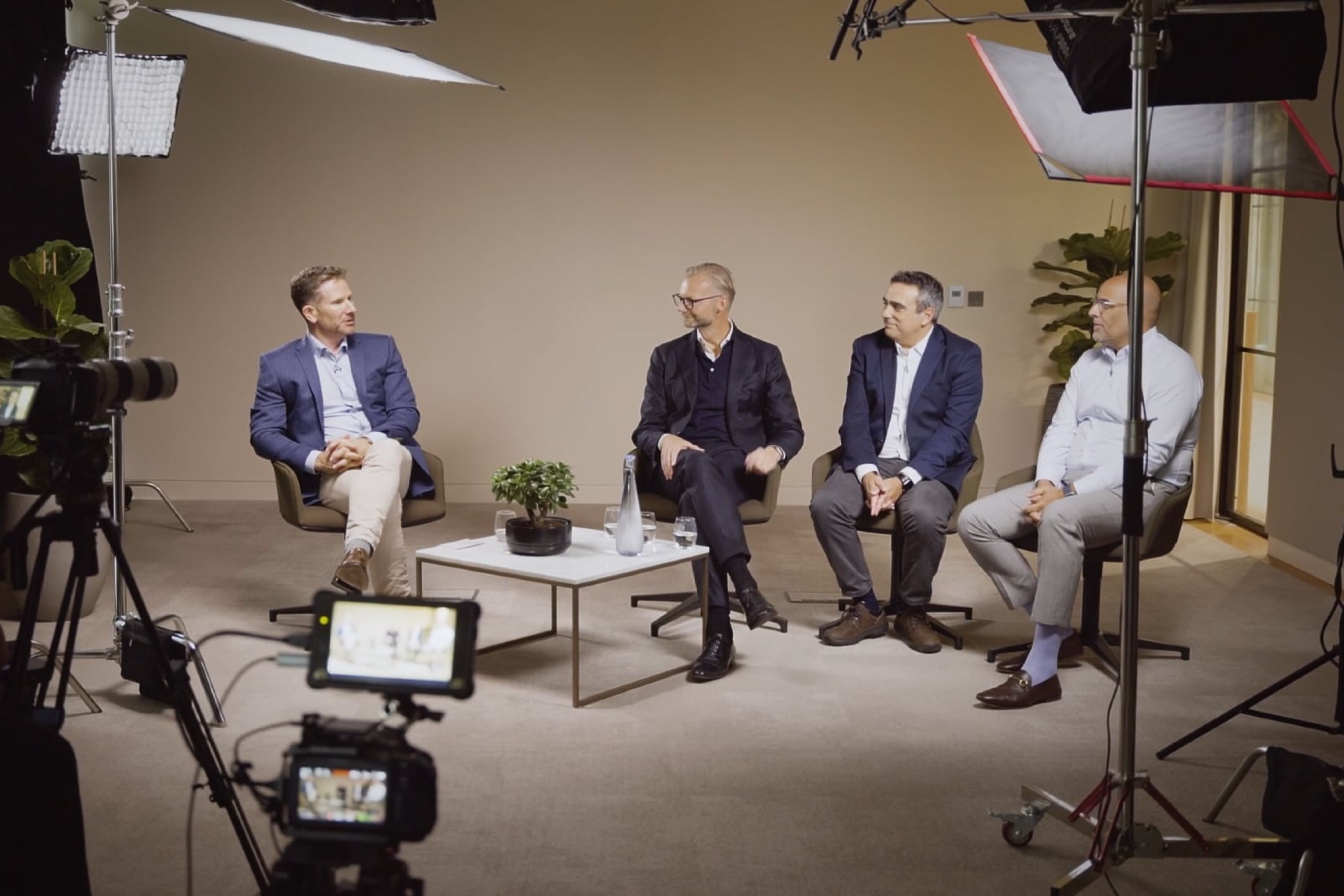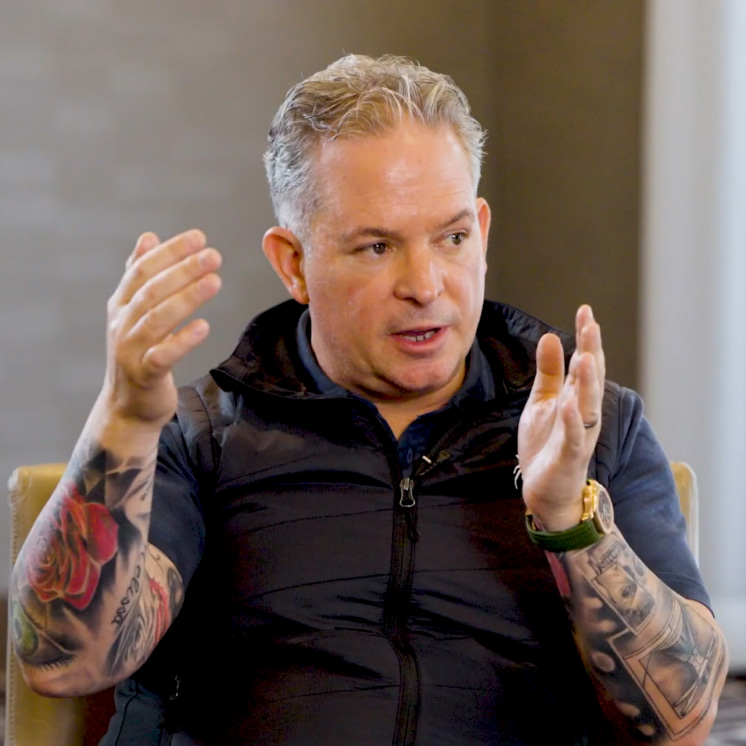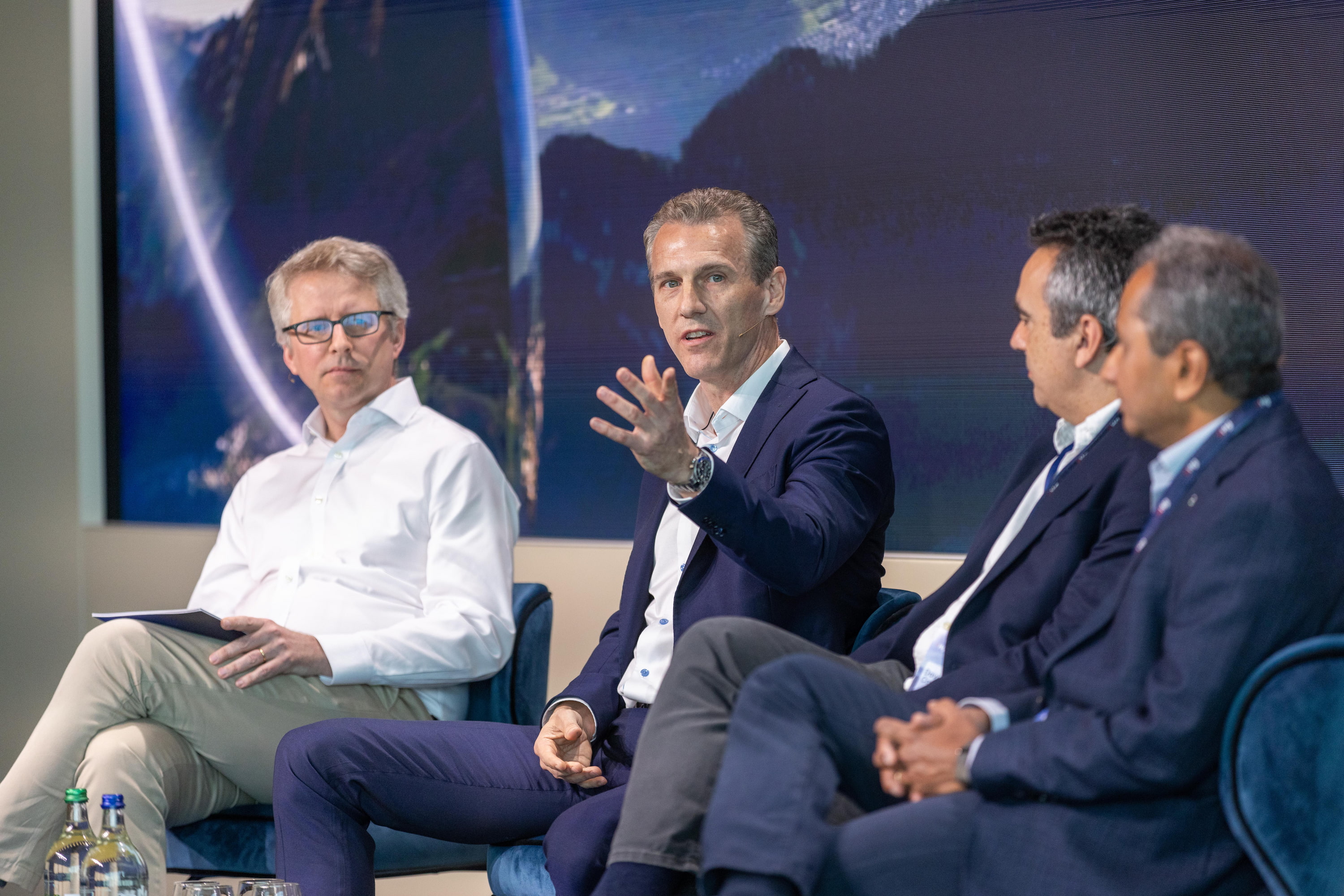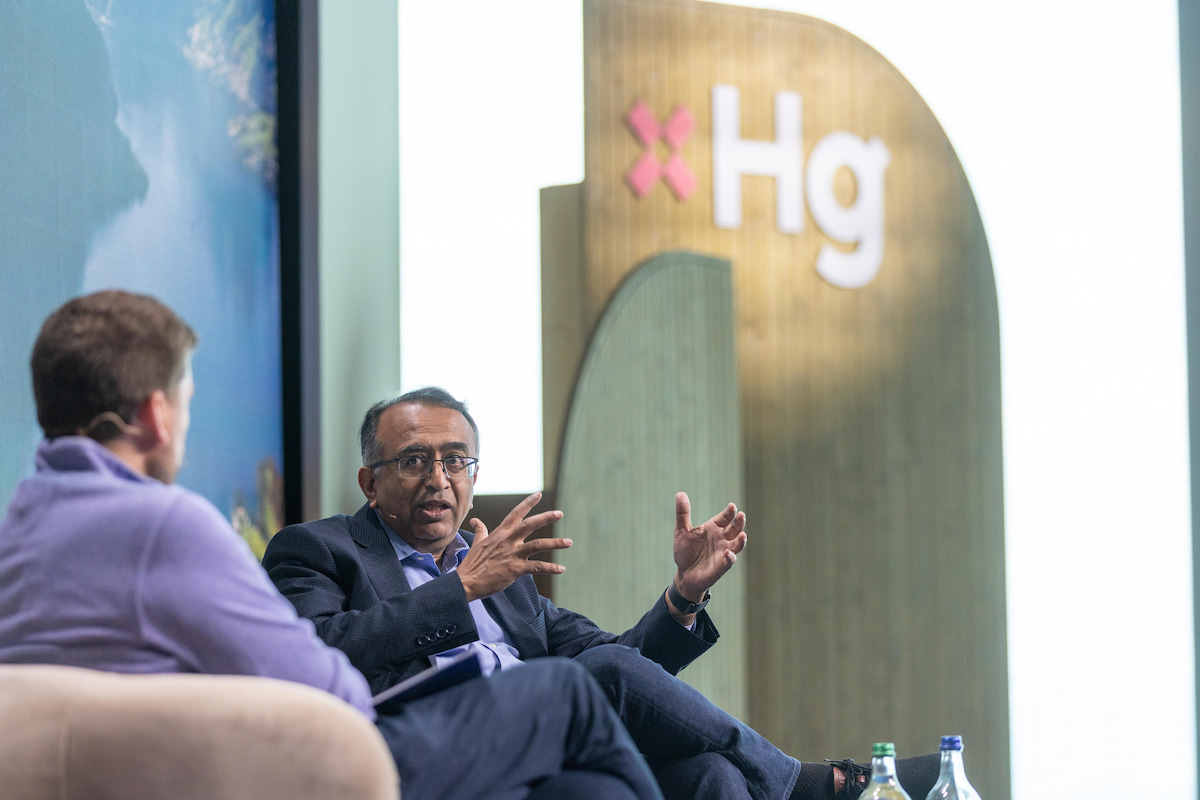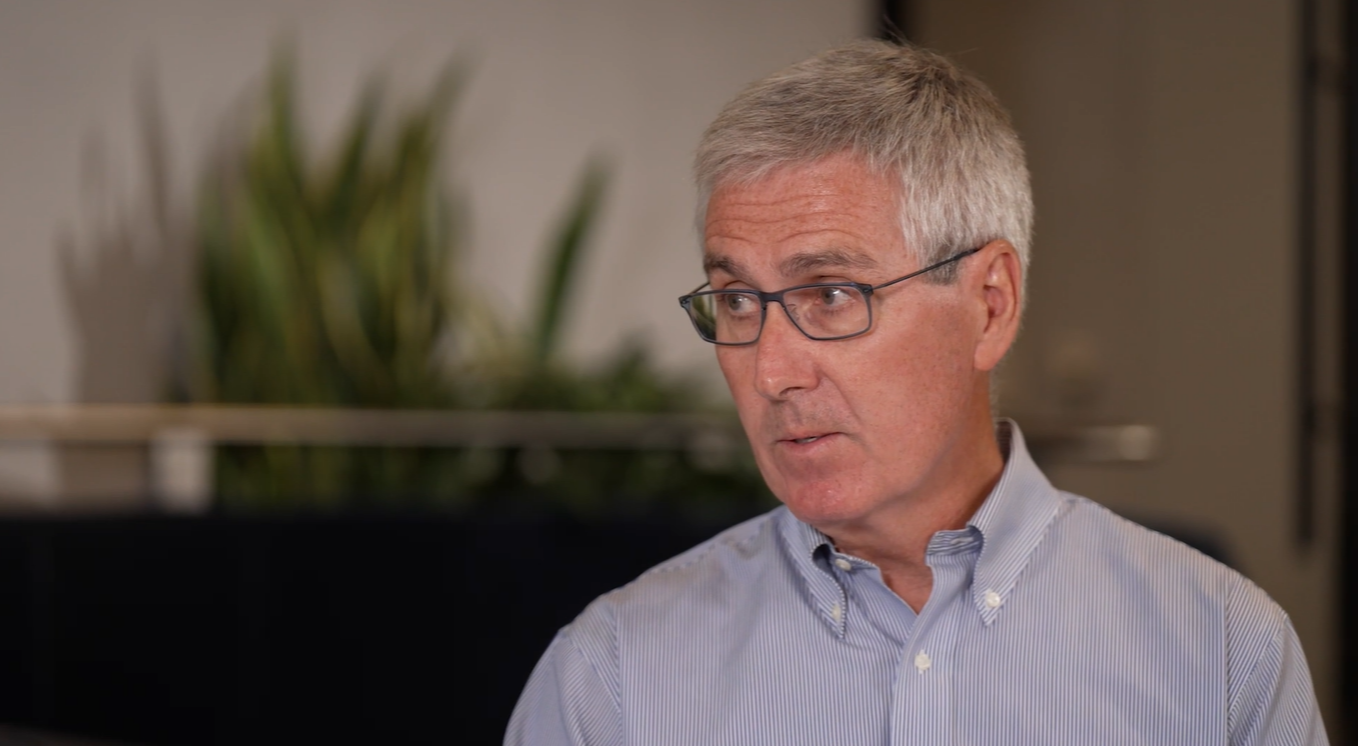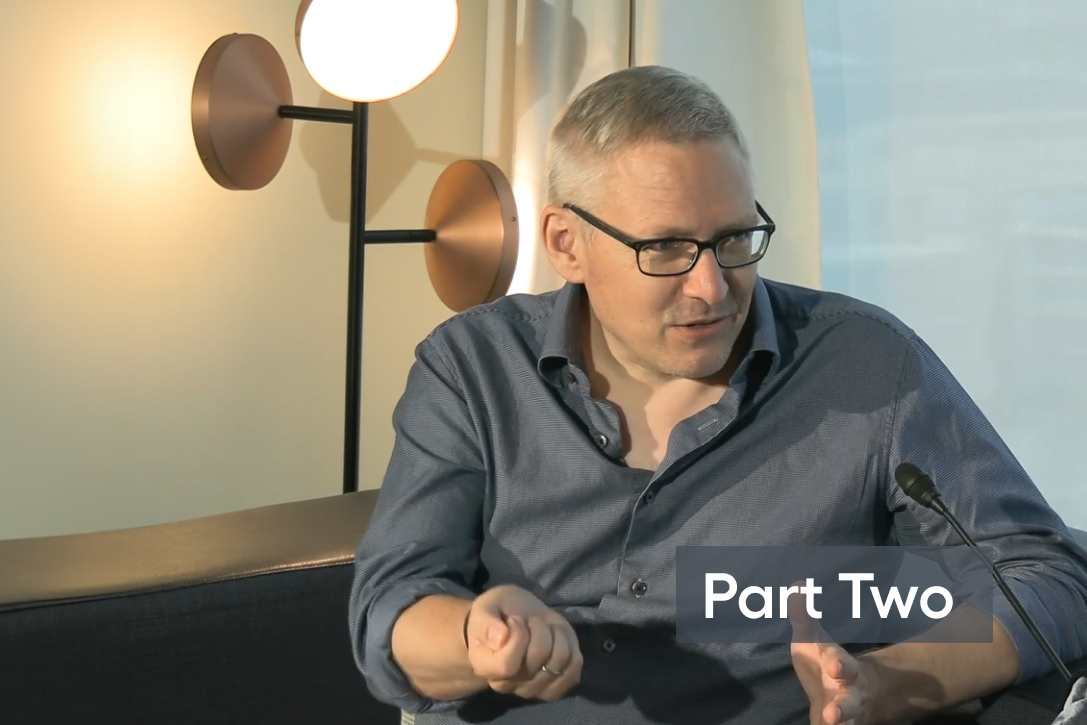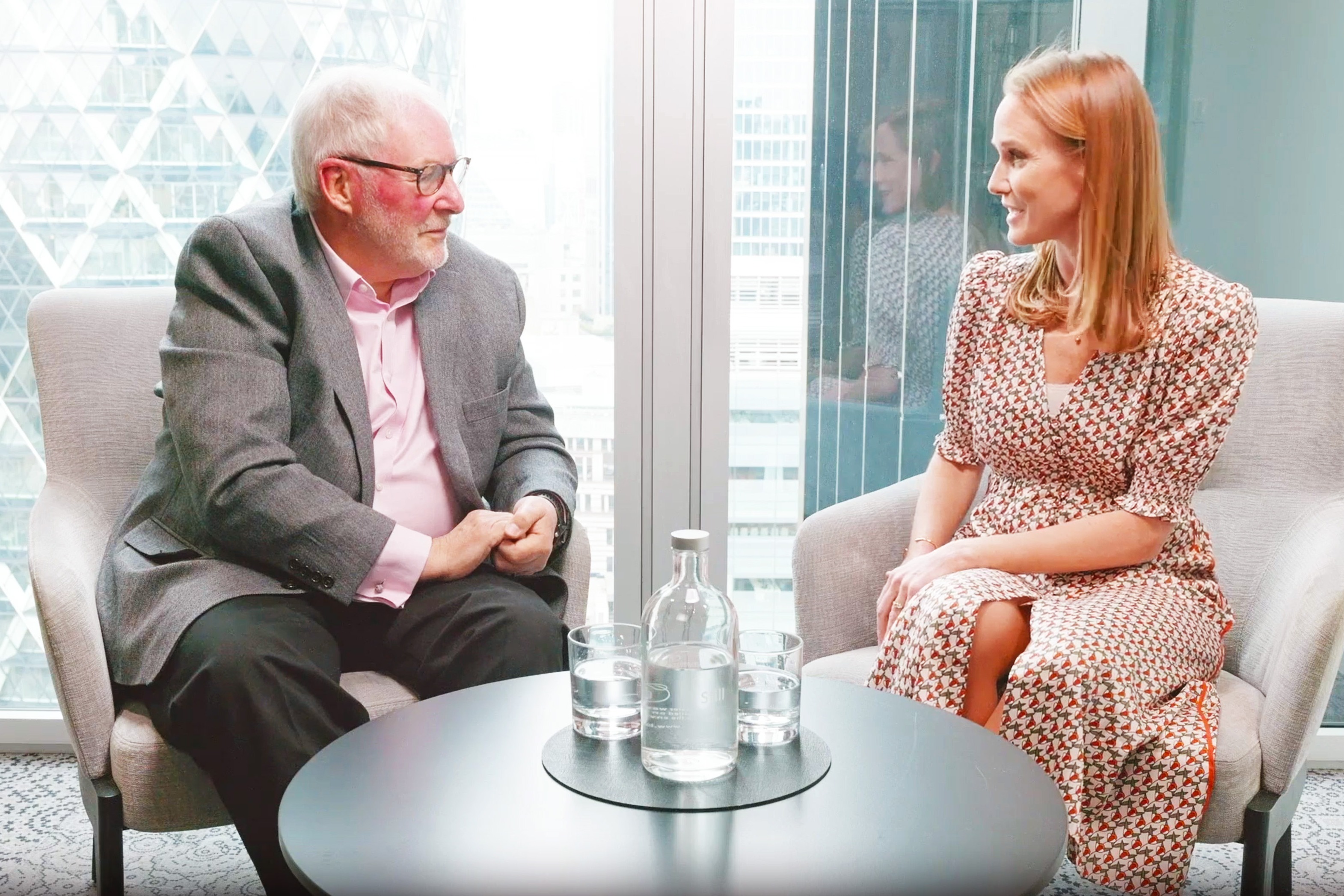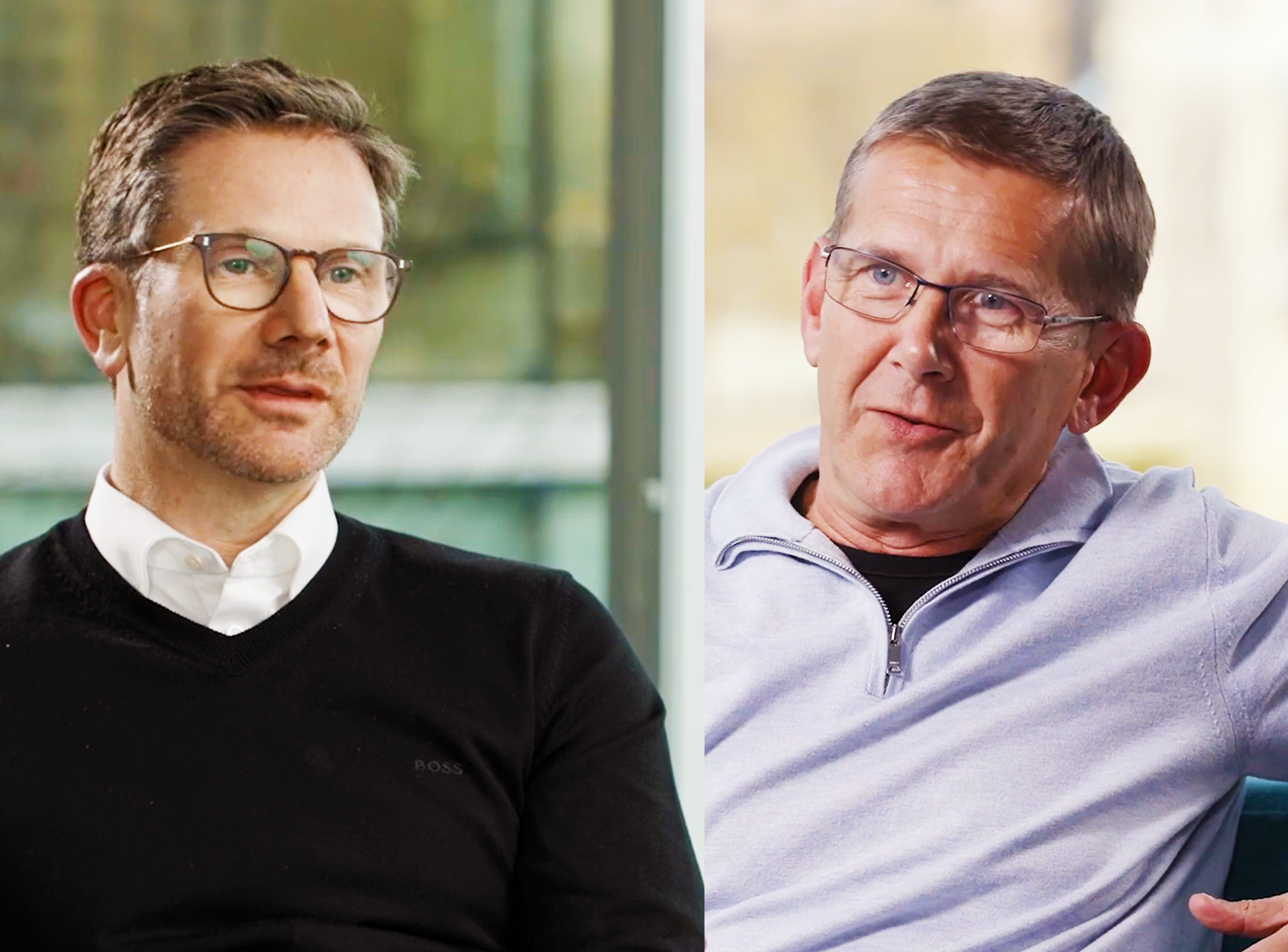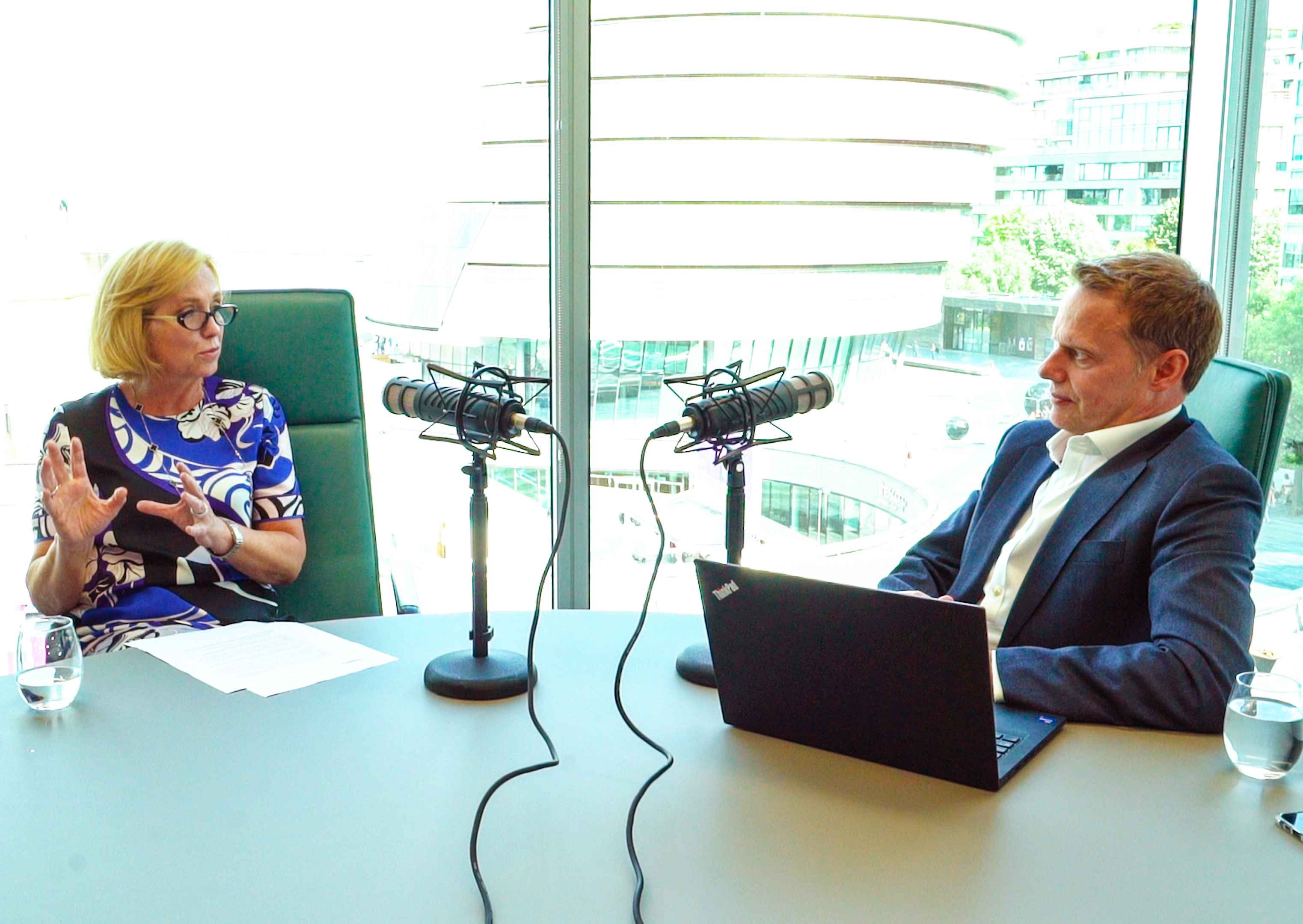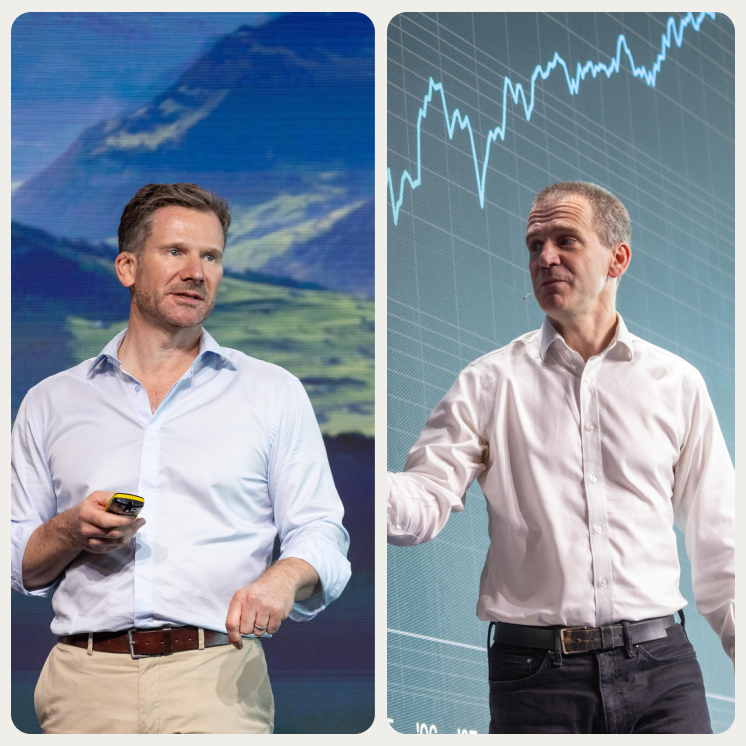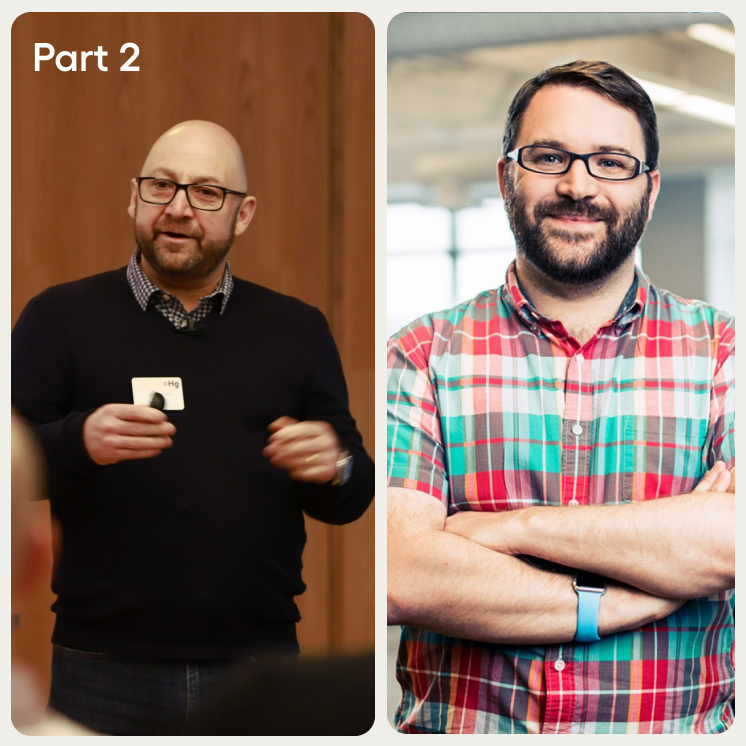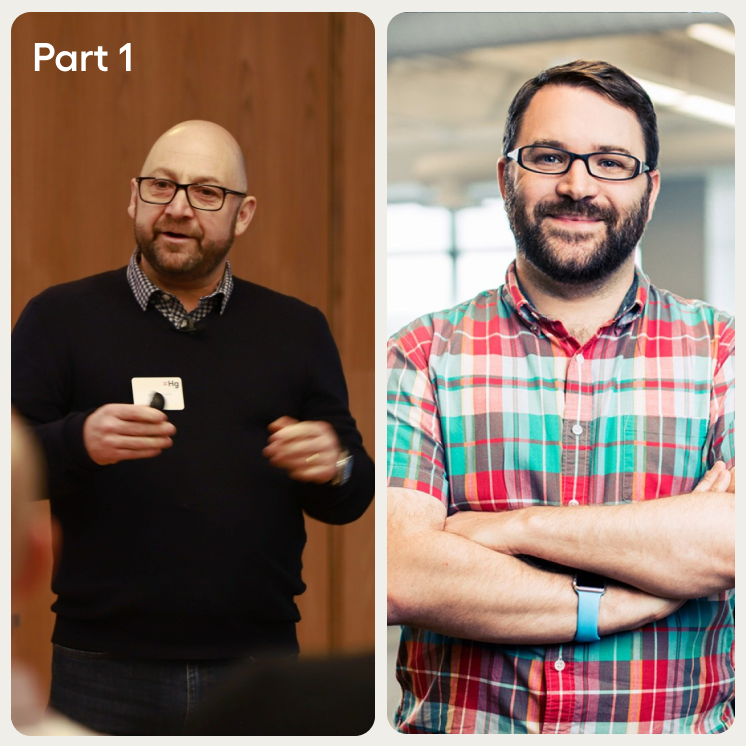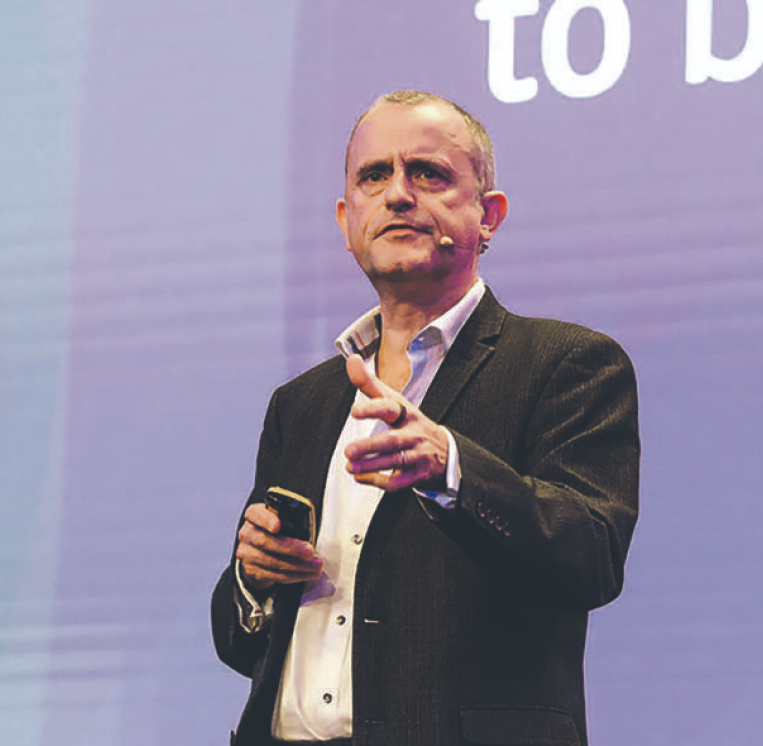Orbit Podcast
Orbit 21
Unravelling the Orthodoxy
Even the notoriously resistant world of insurance has felt the influence of technology, data and software. Most recently, it has thrown open the doors for smaller operators to carve out particular specialisms or niches from the large providers, allowing them to nimbly push things forward and succeed where scale players are slower to move.
In this episode of the Orbit podcast, Andrew Land, a Partner at Hg specialising in insurance software, speaks to George Netherton, Partner and European Head of Insurance and Asset Management at strategy consultancy, Oliver Wyman.
Listen on:
Episode Transcript
Andrew Land
Welcome to Orbit, the Hg Podcast series, where we speak to leaders and innovators from across software and tech ecosystem to discuss the key trends that change how we all do business. My name is Andrew Land. I’m a partner at Hg, specialising in insurance software and services, and I’m thrilled to be joined today by my fellow insurance head, George Netherton, of strategy consultants, Oliver Wyman. George runs their European insurance practice. Thanks for coming along, George.
George Netherton
Thank you for having me.
Andrew Land
We’re going to talk today about unbundling: the unbundling of the insurance industry. It’s a trend which has really accelerated in the last few years. It seems to me that, for decades, you’ve had an aggregation of products into very large, multi-country insurance giants. They would do the whole value chain. So customer acquisition, product design, underwriting, servicing customers, claims management. And to some extent, all parts of the sector were bundled up in a nicely wrapped package, and that package normally had a label on it, like an AXA or an Aviva.
And in insurance, the conventional wisdom was that scale was good. The benefits of scale were obvious, and so the bigger, the better. And I think the trend that we’ve seen, which is fascinating, is that in the last five to ten years, there’s been a very rapid unbundling of this business model. So the various links in the value chain have been broken. Smaller companies are emerging, and this trend seems to be driven partly by the growth and software and data. So I’d like to get into that and just understand how you see that unbundling developing, why it happened, why it’s happening, and then also how you think it may play out in the coming years.
George Netherton
Insurers have really struggled to really generate the benefits of scale, and I think insurers get complex very quickly. As you add a product or add a market or add a channel, it’s very hard to drive real, real, scalable economics out of a solution cube that expands very rapidly across markets, products and channels. The scale advantages around brand and around capital efficiency are there and are well understood, but the operating efficiencies of scale are often negative for big insurance carriers. And so they’ve struggled to hoover up the world in the way that they might, and I think that’s left them vulnerable to disruptive players saying, “Where is the capital light, high-growth revenue or opportunity for me to make a better product, solve a problem better?”
And I think it has been within software and technology inside insurers, but it’s also where individual innovators who, in the past, might have been stuck inside large insurance companies with the costs and the benefits that brings them. They have been able to spin out, start an MGA, get a following, get capacity, get connected to distribution very quickly. As distribution becomes more digital, an individual underwriter with a good idea and an MGA and a team can reach much more than they used to be able to when I had to be able to walk around the square mile with my folio and hope somebody would offer me a risk. So I think a lot of the change has been driven by just the different value pools, the different economics, but also, then, opportunities for capital-like growth by taking a transversal slice on the sector and driving growth that way.
Andrew Land
Yeah, that’s interesting. And I guess the MGA market is perhaps the best example of that unbundling, where you’ve seen this explosion of very, very niche and very specific MGAs develop and thrive in this market, and in that case, the unbundling is product underwriting and capital separating out. To what extent do you think the MGA trend has been driven by software and data versus other drivers? People wanting to have an independent operating model, some of the issues with large carriers having to make underwriting decisions across too many different products with different risk characteristic?. So I’m interested in how that MGA trend has evolved.
George Netherton
Yeah. So the biggest catalyst for the MGA boom was the soft market – a soft market that led carriers to be comfortable backing new teams because the existing businesses weren’t making huge amounts money. They needed to have growth, and so it was easier to get the first cornerstone capacity provider to it. I think that’s true, generically, for MGAs. We think about two types of MGA. Three. Three types of MGA. There are MGAs that distribute and own the customer, and they tend to be the very niche ones where they’ve solved a specific problem, and they are direct-to-consumer or direct-to-small business MGAs. There are single-product MGAs, but that still distribute through brokers, and that is, “I have a better product, or I want my own share of the economics,” etc. And then there are multi-line MGAs where several, normally risk-carrying MGAs rather than distributing MGAs, team up. And there are benefits of several of them huddling together in a storm like penguins in how they then trade through the market.
So a lot of the distributing MGAs, both in personal and commercial insurance, there’s a lot of technology in those. So their scalability, their ability to get customers, their ability to use data, they tend to be natively digital, a lot of the US insuretech, and some of the insuretech that we see here in the UK, that really, they are distributing MGAs. So that would be what Lemonade was doing until they started to explore getting their own capacity. And that definitely is, because the scalability of their business models is entirely built around their use of data, their use of technology, their use of software.
For the risk-carrying MGAs, some of them use technology better. Often they have a lower cost base than the carriers, often that is because their technology is cleaner. It’s not always demonstrably better in standard lines of business, whereas I think if you think about something like cyber, cyber is an interesting one which has come out of the mainstream insurance land, and actually a lot of the growth in cyber is around cyber MGAs, where they are having unbundled from insurance carriers and are rebundling with a bunch of cyber-specific services to create an end-to-end proposition there. And again, that’s definitely software data technology-driven. The whole product, the whole market is driven off the back of changes in the technology ecosystem.
Andrew Land
Yeah, the cyber market is fascinating because you have this concept of preventative insurance where, because cyber attacks happen at source, if you can shut those off quickly, you can then reduce claims, but getting them quickly requires a completely different set of skills. And I suppose the argument would be that the large integrated insurance companies would’ve struggled to have offered that type of flexibility. So cyber markets are another example of why this unbundling trend has been has been arising.
George Netherton
I think cyber specifically is painful for the large insurers. It is definitively modern, and most big insurance carriers are not definitively modern. It aggregates, which goes against everything that insurers like and love. And the distribution of it is particularly painful. So large corporates and multinationals have much higher claims frequency, and so you’re much more likely to hack a big bank than you are to hack the news agents. And so you get completely different frequency dynamics between large corporate and the SMEs, and the SMEs are much harder to reach. It’s a voluntary product, etc.
And so you’ve had insuretech and MGAs really focused on the SME cyber market and the services they can get. What can they do quickly, scalably, use in automated penetration testing versus building big towers of multinational cyber placements, where you’ve got 15 different insurers, different risk management solutions across different layers of the risk and a discomfort with the fact that there is probably aggregates with the other six companies that you’re also trying to underwrite that day. And so it’s really played to the strengths of those companies, able to work at the small end, make a product that works, find a product that works.
At the big end, it really is a risk transfer product. At the small end, it’s as much a service as it is a risk transfer mechanism. So I’m buying the fire brigade, who will turn up when my house is on fire and put it out more than I am buying the insurance on the house, and the better, the better the service offering I have, the better the ecosystem I have around my cyber underwriting capability, the more I can work with a broader range. I can have a wider underwriting footprint. So if the risk of you to me is 1,000, but the risk of you to somebody else is 2,000 because my risk prevention or risk management capabilities are much better, I can charge you 1,900 and make a far bigger profit with a far greater spectrum to write across. And so the advantages of getting the service element right in the ecosystem is why you’re seeing cyber underwriters and some of the leading cyber MGAs acquire the services around that they use on testing, on crisis management, etc.
Andrew Land
And I suppose, yeah, that theme of prevention, it’s similar to what you’ve seen with telematics in the motor insurance world, where you try to preemptively reduce your claims by use of that type of product and using data. So it’s an interesting one that I suspect we’ll see in other product lines as well.
George Netherton
Yeah. So telematics in UK motor has always been the dog that didn’t really quite bark.
So it’s fixed very young drivers being uninsurable, and it’s fixed people with really impaired risk profiles, but it’s not become mainstream. People ultimately would prefer not to be tracked in their car. I think in the next 10 years, you’ll see a change as my car is four years old, but it has a modem in it. The data that is recording how I drive, when I drive, where I drive, all the stuff that an underwriter would kill, it exists.
So at some point, somebody is going to monetise the data that is coming out of my car. And as the car part gets more and more connected and people get better and better at providing a way of consuming that data, that the customer is okay with, then it’s not about pay 200 pounds, an engineer turns up, puts a box in the car, and if I drive too fast at night, then the insurer rings me up and cancels it in the morning, and then I have to disclose next time that I’ve had canceled insurance. It is, “That data is there. Would you like me to have a look at it and either see how you’re driving or whether you should be driving differently, but just as advice, just because I’m nice, or would you like me to see whether you qualify for our top quartile best drivers in the UK specific policy? And if not, we just won’t tell anyone. But if you do qualify, we will.”
And it’s a much easier sell, once the data already exists and I’m not charging you 200 quid to put a box in your car. And so I think it will seep through rather than break through the UK motor system. There have been businesses that have made good strides in other fields. You’re seeing Internet of Things solutions in Marine to track the boats, to track the quality of the cargo, especially in refrigerated Marine to check that it’s not getting too hot and you’re not getting spoiled. So you are seeing other preventative techniques go out. And it’s something that many of my insurance clients think hard about because they don’t want to just be there to pay the bill. They want to help their customer stop the bad thing from happening. And so it’s something that’s really on the minds of big insurers. They just haven’t been able to yet find the right basket of products to be able to really get out in front of the risk and help the client really manage it.
Andrew Land
When you’re talking to the big insurance clients, and by that, I guess we’re talking about the large carriers and underwriters, when they see these types of innovative drivers of unbundling, do they see that as a threat, or do they see that as a way for them to do more business, get better claims ratios, be more efficient themselves? I mean, how do they see these trends from their perspective, their side of the table?
George Netherton
So it varies massively. Some of them are experimental, open-minded, happy to disrupt themselves. Others of them are inherently conservative, would just like the world to stay the same, focused on paying a reliable dividend, and actually, the world changing is not good for them. And it’s not always predictable. Until you’re inside, you wouldn’t be able to tell. You can have some that you might think were conservative from the outside that are very happy to take a risk and innovate, and others where you go, “Really? You’re just going to just do that, that way forever? Okay, great.”
So there is a wide spectrum. I think, in general, there is a skepticism. I think there have been a lot of disruptive innovations that have been touted to carriers by VC or PE businesses that didn’t go anywhere, and some that really did. And so if you’re sitting in a carrier as a product or an underwriter or a commercial director, you’re constantly being told by your board and the outside world and the press that you’re in the dark ages. So you’re constantly spending time experimenting with this neobank that’s definitely going to change insurance, or this product that’s definitely going to change, and half of them aren’t there yet. It’s speculative, and carriers do waste a lot of time experimenting. And then in other cases, if you’re late on the adoption of the best new fraud technology, that can be really problematic, or you’ve missed a new data set that other people have got to. Again, that can be really problematic.
Andrew Land
I guess, yeah, it’s an interesting topic because when you look at the insuretech space, generally, it may still be too early to say which of those business models aren’t going to be long-term liable because, as you rightly point out, many of these innovations turn out to be flashes in the pan. They are not really things that can scale up, and you’ve seen that with the way in which the equity markets have punished a lot of the insuretechs the last few months. I wonder whether, when you think about this disaggregation of the value chain, are there things which you think will be pervasive? So we’ve talked about the MGA model, and that does seem to be a trend that will continue for a very long period. Then we’ve talked about telematics, which has not really worked out, as you said. Are there one or two things that you think, “Okay, there’s now been a change in how this industry works, which will be permanent,” or is it still a bit early to call that?
George Netherton
I think that there is a secular tailwind that will drive low-cost digital distribution of personal insurance products, and I know that it’s easy to sit in the UK and say that, and the Continental Europeans for years have been saying, “No, it won’t happen here,” but slowly, slowly, slowly, there is enough of a cost advantage, and the customer really values price over service in most markets, not all markets, but in most markets that automated processes, straight-through processing, digitally distributed, low-cost, personal, car, and home insurance will gain share in all markets. In some cases, there will be insurtechs either providing the software to those businesses, or they will be, themselves, an insurtech. And you’re seeing that in some markets at the moment, but low-cost digital distribution of personal, car, and home is a thing. And I would underwrite that secular trend in most markets.
And I think the modern technology to insurance carriers, that as an insuretech trend, so insuretech isn’t just the distributing ones, it’s also the products and services into insurers. Yes, you’re continuing to see, at some point, insurers running out of road with what they can do on their legacy technology. Insurers have been much more systematic about re-platforming than banks have been, and so modern technology, valuable, better product management, launch quicker, use data better, manage claims more smoothly. That will change the way that insurance is distributed.
And then the signups between brokers and carriers is also becoming more digitised, very thin, the large brokers, the Marsh and the Howdens, dealing differently, but dealing with carriers increasingly sharing data, sharing information, but also then in the SME sector where digital trading is more and more and more the norm, and the size, that cut-off between digitally traded and human-to-human traded is also going up over time. And that is insurance and technology changing the way the market and that will persist. And we think that will happen in other markets as well.
Andrew Land
If we go to the more boring end of the value chain end, the claims end, do you think you’re seeing also some of the unbundling there, too? I mean, there’s always been independent claims management, but some of the recent innovations with use of drone technology, that kind of thing, seem to be having an impact there. And if I’m a carrier, if I can find ways to offload some of that claims process, I’m going to be more efficient.
George Netherton
Yes.
Andrew Land
Is that happening, too?
George Netherton
I see it happening both ways. So definitely if you can become the market utility for a new specialism, many people are happy to outsource that capability or leverage your better solution to this product. Similarly, where I have to have an international claims network, the more I can trust a third party to manage that, the better. At the other end, in some parts of the motor claims value chain, there is a view to, say, working with a really fragmented network of garages that I don’t control and that is susceptible to fraud, actually, I might be better rebundling it and taking more direct control of the motor value chain and not trusting it to a TPA and not trusting it to other people because the flexibility that I gain from it is not worth the loss of control.
Andrew Land
I see.
George Netherton
So I don’t think it’s an entirely one-way atomisation. I think people are being choiceful about, “What gives me more competitive advantage? What gives me more strategic control?”
Andrew Land
And as you say, having had the experience of unbundling certain parts of the value chain heavily, seeing how that goes, experiencing that for a while, and then saying, “You know what? We’re better off actually pulling this back together again.”
George Netherton
Yeah, absolutely.
Andrew Land
And I think the motor claims is a good example of that. The temptations of just having lots of third-party services, the risk of that, and the cost of that has become evident.
George Netherton
How hard is it for me to do and how important is it for me to be a successful business? Because if it’s really, really at the core of what I do, which managing claims for value really is at the core of what a motor insurer does, then if I’m only using third-party services that I have no advantage relationship with, I have to believe I’m doing something else enough better than everybody else to make my return. Otherwise, I have to believe that I have to take a big enough stake, I have to take a big enough position to outperform on the way that I manage claims as part of supporting my right to exist.
Andrew Land
George, talking about the insurance unbundling, I’d love to get your views on, or the parallels between the insurance and the banking sector because I think you’ve had a very similar trend over similar periods of the banking value chain also disaggregating. Can you give us some thoughts on that?
George Netherton
Yeah, absolutely. So this year’s Oliver Wyman State of the Financial Services Report was specifically on this. So insurance was slightly ahead of the game in that there had always been the separation between distribution done mainly via brokers, underwriting done mainly by the carriers, and then risk sharing done by the mechanisms of reinsurance where the universal banking model was still to own the customer, underwrite all the credit risk, and largely have a big balance sheet on which the majority of that risk sat. And in the last 10 years, you’ve seen significant disruption to that value chain as that has also broken down into the technology and the services, the infrastructure that supports it, data management businesses. The data that banks have sat on for years is really now being monetized by third parties with the growth of very, very valuable data businesses invested in by discerning private equity clients at vastly superior multiples than those which the banks themselves benefit from.
So the insurance industry was slightly more unbundled, but the banking industry has been more rapidly unbundled with the value accruing largely to non-bank shareholders, be it big tech in the way that big tech has benefited from that, or the way that the payments ecosystem has become incredibly valuable, again, outside of the control of the mainstream banking industry.
Insurance has not unbundled to the same degree. You’re not getting fast-growth businesses that don’t look anything like the way that a traditional insurance business might have been architected, but you’ve seen significant value creation gap between brokers and carriers. If you look over 10 years, total shareholder return, and the forward P/E multiple, brokers significantly outperform underwriters. Underwriters have really struggled to return cost capital. And yet, there are underwriting businesses that have generated extremely good returns.
The UK all looked at the CFC process last year and saw what was reported in the press to be a very hefty valuation put on what is effectively very high-quality underwriting business at a much bigger multiple than any other underwriting businesses, and that is because it was detached from the balance sheet. So it had created a business that was multi-line, reliable, recurring revenue, but didn’t come with a big capital intensive balance sheet because the quality of the underwriting was good enough that they could stick to what they wanted to do, which was be a technology-driven business and drive up the underwriting returns without being weigh down by a balance sheet.
Andrew Land
And that raises another fascinating area, which is ownership models. As you rightly say, traditionally, both in banking and insurance, that the classic ownership model has been public ownership. The really big operators have typically been publicly listed. As a private equity investor, we’re interested in the private capital side of this, and I think in insurance, you’ve seen a combination of private equity being heavily invested in the broken and distribution space as we are at Hg, but also in very specific capital vehicles, particularly in Bermuda and other markets. And that different ownership model obviously drives different things.
The one thing that really fascinates me is the return of the mutual. So mutual ownership, which people probably thought was dead and buried 25 years ago, seems to be making a recovery. And I’d love to know your thoughts on why that’s happened and whether that’s something that’s going to continue.
George Netherton
So I think there’s a few things here. It sounds trite, but mutual businesses really benefit from taking a long-term view. They can be somewhat unfairly derided for being sleepy, lazy, insular. But my experience of working with mutual clients has been that they are long-term in their outlook, focused on delivering across a different set of metrics than just a public listed company would be doing. And often more prepared to take a risk on something that may take a long time to transpire because they expect to be around in that period. So there’s that part of a long-term mentality, which makes them immune to fads, if they’re run the right way, and often the quality of the boards and the board discussions are really good because they see a different purpose than purely driving the cost out. And that can be very difficult for publicly-owned insurers to do with the winds of the market and shareholders or activist shareholders to appease and to demonstrate progress against. They can not have the luxury of taking a long-term view sometimes.
I think the other is if, if you think about the S in ESG, there is a social aspect to mutual, certainly to micro mutuals, and in particular, where there is a risk of anti-selection. So motor or health or bicycles, we’re seeing where the fraud risk is high, the benefit of creating a group of responsible and connected people to share in the cost and to mutualize the risk between them improves the risk of all of them. And to a millennial generation who are very comfortable in that mindset viewpoint, then there’s an opportunity to benefit from, “Well, I will insure 30 of you together, and you’ll all benefit from better experience.” And so I think that there is a proposition aspect to it as well that will work. There have been a few goes at it, and I think people are continuing to see something there where it’s communities is what they try to create.
Andrew Land
Yeah. Yes. And I guess it’s a not-for-profit organization where the benefits are shared amongst like-minded people.
And it’s interesting there, I suppose that micro mutual, that is the selection process is administered by the individuals who are part of it. So that risk of having fraud or some extreme loss is minimized or reduced, at least.
George Netherton
Yes, absolutely.
If you create a family health insurance product for the whole extended family, less so in the UK, but in a market where over-utilisation of healthcare is a big driver of claims experience, and everybody knows, effectively, we have a budget for who draws down on what health over the year and the insurer will pay for Christmas if we don’t overuse it, then there’s a real collective benefit, collective incentive. We’re all in this together. Do you really, really need to go and have that seventh part session of physiotherapy when we all know you just twisted your ankle, or in the motor market, absolutely, no, you don’t have whiplash, and you’ve created a cohort of 50 people where everybody benefits.
I’ve always wanted to see that kind of structure put in via employee benefits. I’ve always thought if I could take the whole pool of an employee workforce, sign as many of them up for the car insurance product as I could simple, simple-ish distribution, where if claims don’t go above a certain level by the end of the year, we’ll pay for the Christmas party. The ability to create an incentive, create a community around it, get everybody rowing in the same direction, I’ve always liked the concept, but never seen it work.
Andrew Land
It sounds like we need a separate podcast for that one, George. So George, taking all of that into account, if we want to look forward five years, and this unbundling trend continuing, driven by software and data, where do you see that going? What’s going to happen next?
George Netherton
So I think in five years’ time, you will have a much better equipped industry. Brokers, underwriters, service providers, where the holdouts on legacy technology who can’t do things quickly, can’t ingest new data, can’t adapt or buy in modular services and integrate them into their value chains, that tail will have shrunk down. So I think we will have finished market modernisation, I think, in five years time, where you just have a stable base. I think the digital distribution will continue to grow, continue of taken share. The relationship aspects of distribution will have wound down as the convenience aspects of distribution and the embedded nature of some of that distribution has increased. And then I think you will see fast growth of really good product point solutions that are able to solve one problem really well and be easily integrated into the wider ecosystem.
And then, finally, as we’ve seen in cyber, I think you’ll see rebundling, but in different coalitions. So aggregations of different products and services and players to pull together, but it may not look at all like a traditional … the alliances of the value chain of a traditional insurance company, but potent new alliances solving, again, one problem really, really well, and the interoperability of those businesses being a real asset to it.
Andrew Land
Well, thanks, George. It has been a really fascinating discussion. Thank you very much for coming down to Hg today to talk about it. And thanks, everybody, for listening.
Orbit episodes
Orbit Podcast
The 3 speed problem: Oji Udezue on CPO leadership in the age of unlimited engineering
Episode detailsOrbit Podcast
Fevered determination: Building Zalos from zero to enterprise in 5 weeks
Episode detailsOrbit Podcast
Trust, velocity, and building the Answer Engine: Dmitry Shevelenko of Perplexity speaks to Farouk Hussein
Episode detailsOrbit Podcast
The long road to the last mile: Nic Humphries and Matthew Brockman reflect on 25 years of Hg
Episode detailsOrbit Podcast
AI, Control Points, and the Next Wave of Vertical SaaS with Tidemark Capital founder, Dave Yuan
Episode detailsOrbit Podcast
A glimpse of the next generation: Zoe Zhao and Annalise Dragic of Azlin Software
Episode detailsOrbit Podcast
The business case for AI: Brent Hayward of Salesforce, David Carmona of Microsoft & Nagraj Kashyap of Touring Capital
Episode detailsOrbit Podcast
Mastering the billion-dollar software playbook: Joe Lonsdale of 8VC & Eric Poirier of Addepar
Episode detailsOrbit Podcast









